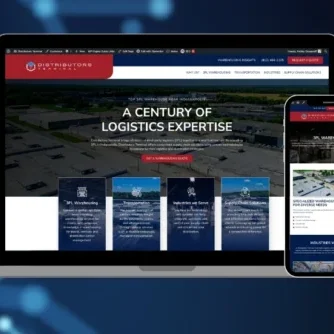Have you ever heard it’s not WHAT you say – it’s HOW you say it? When it comes to good marketing and advertising, the message is important – but the message must be paired with a well-crafted design, color, and font to complete your brand identity. Visually, these three elements make up the look, feel, and personality of your company. They play a critical role in how your audience perceives your brand even before they hear what you have to say.
Choosing the right font is an essential detail that cannot be overlooked because, when done well, it delivers a professional, cohesive look and puts together the comprehensive image you want to portray.
Basic font styles
Before we get started, let’s review the difference between serif and sans serif fonts.
The above examples are both set to the same size and with the same spacing between letters, so you’ll notice that Sans Serif fonts tend to be larger.
Traditionally, Sans Serifs were used for headlines and short, single lines of text while Serif fonts were used for body copy. This is because the serifs, at the bottom of each letter, were thought to connect the letters and facilitate the reading of larger bodies of text. However, nowadays, Sans Serifs like Arial and Helvetica are accepted and often preferred for these purposes as well.
Below are a couple tips to help guide you in choosing an appropriate font for your brand portfolio.
San Serif Fonts – Professional and Clean
- Style: Modern, Professional, Stable, Progressive, Clean, Crisp
- Good for: Both printed documents and on-screen
- Works well in small and large sizes
- Tips:
- Simplicity and clarity allow them to stand out over background images.
- Thick weight in letters creates a very bold and strong image (CAT).
- Thin weight in letters creates a very modern image (Apple).
- This font can also be used for soft and elegant styles.
Serif Fonts
- Style: Traditional, Professional, Reliable, Respectable
- Good for: Headlines and lengthy, printed pieces as body copy
- Less readable in small sizes
- Tips:
- Can add touches of elegance and/or formality
- Makes long pieces easier to read, ie: books, newspapers
In the above example with our client Tri-Par, a Sans Serif fit their hometown chain of 7 convenience stores. It is used in headlines and graphics throughout their stores, websites, and promotional materials. To complement, and not conflict, with the primary font, we paired it with a very clean Sans Serif for body copy. The combination of the two results in a hierarchy that first draws attention to the main message, and then gives supplemental information to the busy shoppers that visit their stores.
Limiting your logo, and corporate materials, to one or two carefully paired fonts will a create much more aesthetically pleasing, easy to read, and professional image. To still get that differentiation when you need it, you can test weight sizes (like in the Apple and CAT examples), uppercase vs lowercase, and letter spacing, all of which we will highlight in another blog.
If you would like assistance from Autumn’s design team in determining appropriate fonts for your brand or to give you feedback on what you have put together, we’d love to hear from you.




